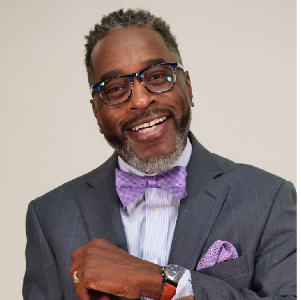On Friday, August 9th, we had the pleasure of hearing Existential Humanist board member, Dr. Daniel Parker, speak to the notion of anxiety from an existential analytic lens. Daniel is a licensed clinical psychologist, and runs a private practice in Portland, Oregon. Daniel first gave a background on the topic of existential analysis. Rooted in the anthropology of Victor Frankl and logotherapy, this branch of analysis responds to the tendency to look at life beyond the physical/bodily and even psychological realms, into what is called, the noetic dimension.
This third and personal realm of experience is uniquely human, centered in the dimension of living a life that transcends our animal nature—the ability to make and sustain meaning. This, Daniel spoke to, is where the person truly shows up. How each person chooses to make meaning is therefore a conscientious action. And the aim of this therapeutic approach is in facilitating this process of meaning-making.
In the modern era of existential analysis, Dr. Alfred Langle put forth the notion that meaning could only truly be accessed if underlying existential foundations were solid. Whereas Frankl’s approach was primarily cognitive in nature, Langle brought in emotions. More important than any therapeutic goal, he felt, was helping a person open to their own life. This involves living with, as Daniel put it, inner consent. Inner consent is a “yes” to life, an active and engaged agreement. To get to this point, however, Daniel outlined four fundamental conditions to be met.
Firstly, a person must confront reality, itself. This includes the existential givens, and the idea that in being thrown into this existence, there are certain unavoidable facts beyond our control. We must access our physicality, the reality of mortality, loss, and hopefully find enough safety and support to promote continuing onward with our lives. This is the dimension of “I am”, but brings up the question of, “Can I really be?”.
This first condition is not enough to live a meaningful life, which brings us into the second condition—do I like the conditions of my existence. This question asks of us the ability to experience closeness and intimacy, to feel seen by another. It is the condition of relationships, community and belonging, bringing up the question, “Do I really like to be?”.
Once this condition is met, and we have sufficient space and support, we must find the things we like and value. Now that I have sufficient space and support, what is truly me as an individual? Do I feel allowed to express myself? Do I have permission to be seen or do I feel bogged down by shame? Do I have a sense that I can be how I am?
According to this perspective, it is only after all of these conditions are met that we confront the meaning dimension. This is the wider context of being alive. Can I contribute to this world? Does my existence mean something, given my life will not go on forever?
This is also where the concept of anxiety comes in. Anxiety is a natural, normal response to such a continuous (and discontinuous) state of being human. Yet anxiety can be healthy or pathological. Anxiety asks the question, “Can I be?”. This question pertains to all dimensions of inner and outer experience, which we are constantly straddling and negotiating between. Can I be liked, or accept not being liked by some? Can I be accepted, or accept myself? Can I live with the awareness of death and loss and suffering? And do I have enough power and inner consent, as well as favorable enough external conditions, to go about this?
Healthy anxiety is inherent to life as it is life-preserving. It demands within us an answer, and points us to when something is amiss. Anxiety expresses to us when we do not feel free to deal with life, and when something is not in alignment with our values and core nature. It seeks to protect, eliminate threat, and hopefully helps us turn toward. Yet, anxiety can also be pathological. This looks like saying “no” to living in the world. It says, “If there are no guarantees, how can I be?” This blocks existence, because it does not give inner consent to being and all the subsequent experiences of being alive.
When we do choose to endure, we assess the problem and decide we have the power to tolerate it. This entails many dimensions—personal, relational, communal, societal, cultural, etc. Yet it centers on the notion that I decide within myself that I can endure. And endurance, Daniel explains, involves several key aspects.
Namely, endurance requires space. As therapists, we try to create a space for clients, both to model this process and demonstrate that a space can contain a client’s experience. This ultimately facilitates the process of space within ourselves, a distance between the experience and the inner “I” that is experiencing life. This space also looks like letting something be, when appropriate. It facilitates mindful allowance of emotional experience, and the idea that emotions and experiences may be part of me, but they are not the whole picture.
Endurance also requires protection, which involves the skills to bring about calmness—to feel accepted by oneself, another, or some other force of nature meaningful to the individual. This also looks like being one’s own ally, attuning to oneself. To facilitate this perspective, a therapist might ask their client, “how do you feel about your response?”, and even, “how would you like to respond?”, as a suggestion that there can be agency—a space between the inner “I” and the felt experience. This process of protection is about developing inner resources.
Next, endurance involves support, of self, therapist, or others. This is the idea that “I can be held”. And when necessary, the therapist can hold, until other resources are enacted. This involves a truly compassionate stance toward oneself and client. It is the unconditional positive regard developed, perhaps, first in therapy, and later with oneself.
Lastly, endurance includes trust. This is trust in oneself and the world, in spite of all that is uncontrollable and challenging. This is the acceptance of existential facts and deciding to turn toward the pain. Trust is a personal position to deal with authenticity, aligned with one’s own values. In the process of being alive, we try to develop enough trust in ourselves to navigate our world. And all of this can be both demonstrated and played out with the therapist.
The aims of an existential analyst are to guide people toward a free experience, a truly responsible way of living. The contact with responsibility facilitates a continuous process of understanding oneself in the context of life, and is intimately interconnected with this idea of inner consent. It is about the courage to know one’s own values and find meaning within the existential givens so that one can take responsibility for living.




